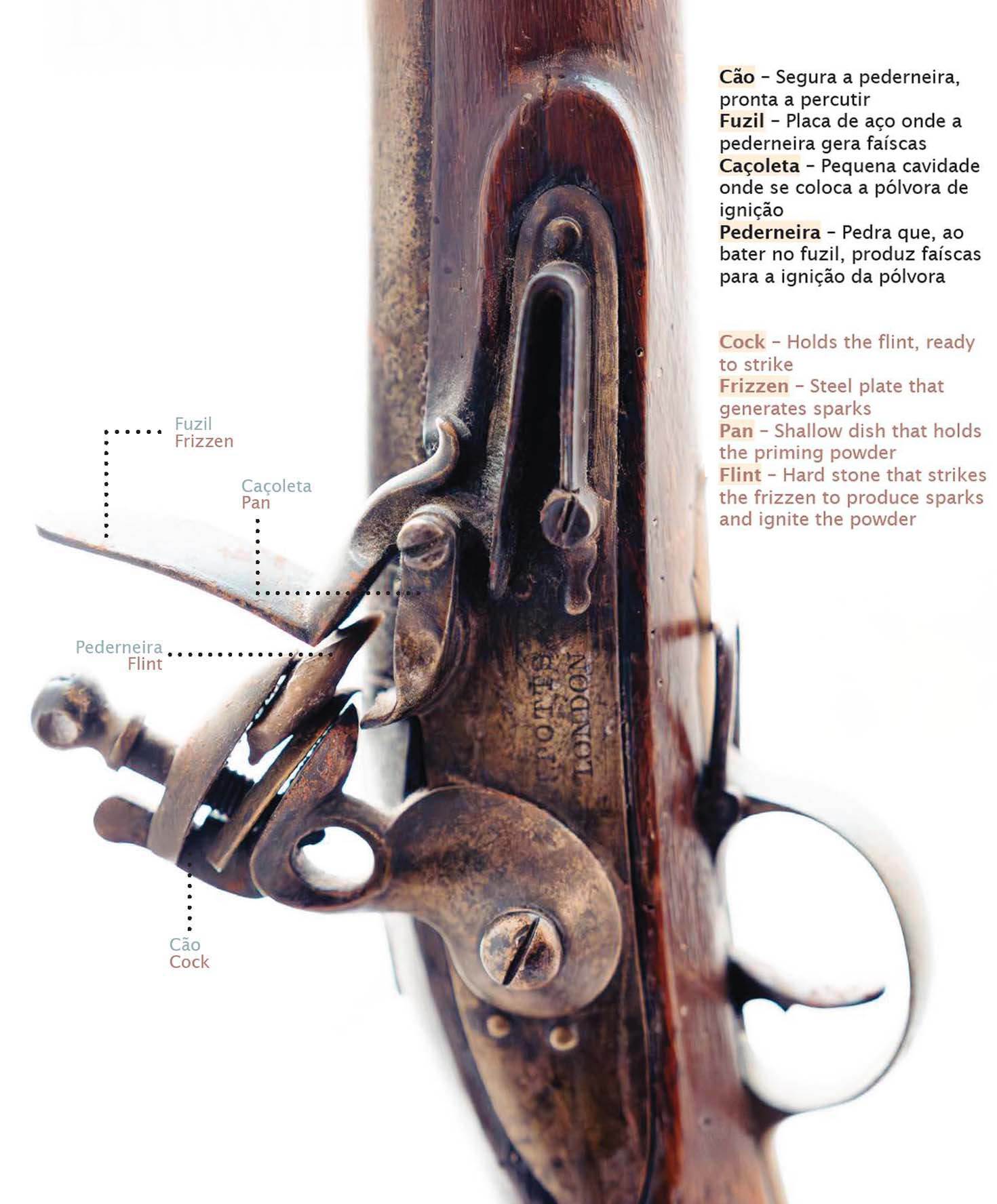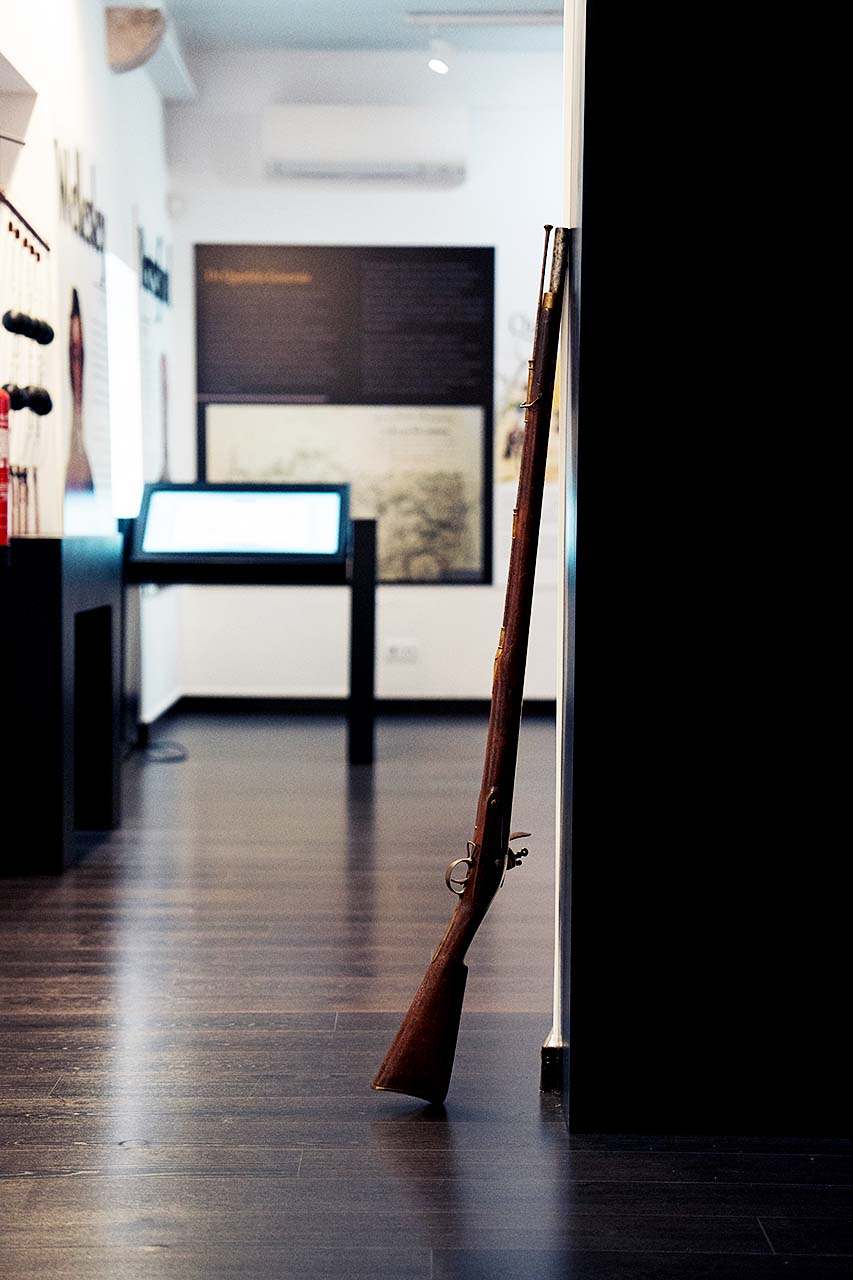

Since 20 October 2024, the Sobral de Monte Agraço Lines of Torres Vedras Interpretation Centre (CILT) has welcomed a new and valuable historical item: a musket and bayonet of the East India Export Model — more commonly known as the “Brown Bess.”
This iconic weapon, used by Luso-British forces during the Battle of Bussaco on 27 September 1810, is a symbol of resistance against the Third French Invasion. It was discovered in the village of Sula, a key site in the military confrontation and the scene of action by the British Army’s Light Division and the 19th Infantry Regiment of the Portuguese Army.
Now part of the CILT collection, the musket strengthens the centre’s mission to preserve and share the memory of the French Invasions — a defining chapter in Portugal’s history.
Dating from the early 19th century, the piece bears the mark “T. Potts London,” indicating it was made by the London gunsmith Thomas Potts. It can be seen in the CILT’s permanent exhibition, alongside other key elements of the military heritage of the Lines of Torres Vedras.
This type of musket was standard issue for British and colonial forces and was widely used between 1720 and 1830. The East India variant was shorter and lighter, making it easier to handle in difficult terrain — like the Portuguese hills that characterised the campaigns of the French Invasions.
Found on the battlefield itself, the weapon is more than a military artefact: it is a powerful material witness to a pivotal moment in European and Portuguese history. At a time when heritage faces increasing threats — from neglect to natural decay and the loss of local memory — preserving objects like this musket is essential. They tell stories. They are physical bridges between past and present, capable of bringing us closer to the lives of those who fought for Portugal’s sovereignty more than two centuries ago.
Its acquisition by the municipality of Sobral de Monte Agraço was made possible with the support of the Friends of the Lines of Torres Vedras, the British Historical Society of Portugal, and British enthusiasts Clive Gilbert and Mark Crathorne, who entrusted the Interpretation Centre with the role of guardian and promoter of this historical legacy.
More than a weapon, the Brown Bess now on display in Sobral de Monte Agraço is a key to understanding the resistance, ingenuity, and international cooperation that shaped the construction of the Lines of Torres Vedras — still one of the largest defensive systems in European history.
We invite all visitors to discover this remarkable piece and, through it, to rediscover the strength of our shared heritage.
